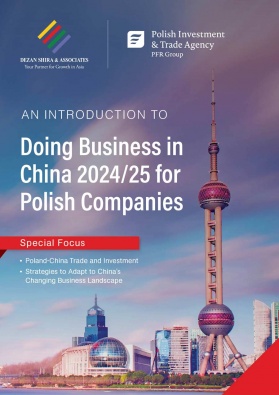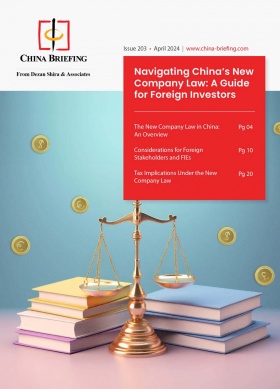Navigating China-Uzbekistan Investment and Trade Opportunities
- China and Uzbekistan have maintained strong ties since the establishment of the bilateral relationship in 1992. In 2024, this relationship was upgraded to an all-weather comprehensive strategic partnership.
- China is Uzbekistan’s largest trading partner, as well as the largest source of imports and the second-largest destination for exports.
- The two countries have vast opportunities for cooperation in areas such as agriculture, green energy, tourism, and infrastructure.
As an important country along the ancient Silk Road and the new Silk Road Economic Belt, Uzbekistan was the first among the five Central Asian countries to establish formal diplomatic relations with China. Over the past 20 years since the establishment of diplomatic ties, bilateral cooperation in various fields between Uzbekistan and China has been advancing smoothly. In June 2016, China-Uzbekistan relations were officially upgraded to a comprehensive strategic partnership. In 2022, they announced their commitment to building a community with a shared future at the bilateral level. In 2024, they established a new era of all-weather comprehensive strategic partnership.
China-Uzbekistan relations
China and Uzbekistan established diplomatic ties in 1992. Since then, the two countries have maintained strong ties and reached several diplomatic milestones. Uzbekistan joined as a founding member of the Shanghai Cooperation Organization (SCO) in 2001, a regional economic and security alliance that today is made up of China, Russia, Kazakhstan, Tajikistan, Kyrgyzstan, Iran, India, and Pakistan.
In 2005, China and Uzbekistan signed the “China-Uzbek Treaty of Friendship and Cooperation”, a bilateral treaty containing several initiatives, including cooperation on the economy, trade, counterterrorism, and anti-drug trafficking, among other measures.
With the launch of the Belt and Road Initiative (BRI) in 2013, Uzbekistan has become a strategic geopolitical partner in the region. Although the two countries don’t share a border, Uzbekistan’s location places it right in China’s path to Turkmenistan to the west, a major source of natural gas. The Central Asia-China Pipeline passes through Uzbekistan to connect Turkmenistan’s gas supply to China’s grid in the western region of Xinjiang.
In addition, Uzbekistan’s proximity to the Caspian Sea makes it a viable corridor opening trade routes to the Persian Gulf and Black Sea ports. Uzbekistan itself also supplies a significant amount of natural gas to China, as well as other commodities, including cotton and inorganic chemicals.
China-Uzbek relations began to pick up speed with the appointment of President Shavkat Mirziyoyev in 2016. The significant market liberalization and economic reforms implemented by the new president have made the country one of the five fastest-growing in the world, giving a boost to bilateral ties as China’s goals for regional development align with Uzbekistan’s economic ambitions. It has also made the country increasingly investor-friendly and more welcoming of Chinese investment than some of its neighbors.
China’s relationship with Uzbekistan has therefore perhaps been the most fruitful among the Central Asian countries, with both countries actively cooperating in a myriad of fields from infrastructure development to scientific research.
In 2021, Uzbekistan upped the number of visa-free days Chinese citizens could enjoy in the country from five to seven to facilitate travel and tourism in the country. The two countries have also deepened cultural exchange. Uzbekistan was the first country in the world to open a Confucius Institute, a Chinese language and cultural institution, and centers for the study of Uzbek language and culture have been set up in Chinese universities.
China’s relationship with Uzbekistan benefits from a mutual desire for bilateral trade, regional development, and stability. Moreover, as Uzbekistan is geographically removed from China’s immediate vicinity, it is also spared from handling some of the major issues that plague relations between China and other Central Asian countries, most notably security concerns at the borders.
However, bilateral trade and cooperation are inseparable from wider geopolitical realities. Difficulties establishing secure and efficient trade routes through intermediary countries, such as Kyrgyzstan and Tajikistan, may hamper trade with Uzbekistan and other countries further west.
For example, the Uzbekistan-Kyrgyzstan-China Transport Corridor, a trade route planned for transporting cargo between China and Uzbekistan currently still relies on trucks for the portion of the route running across the Kyrgyz border, despite there being working railways on both the Chinese and Uzbek sides. Such issues will need to be ironed out if long-term sustainable trade in the region is to be maintained.
China-Uzbekistan bilateral trade
From 2016 to 2020, China consistently ranked as Uzbekistan’s largest trading partner. However, due to the impact of the COVID-19 pandemic, in 2021 and 2022, China was narrowly surpassed by Russia, becoming Uzbekistan’s second-largest trading partner. In the first half of 2023, China reclaimed its position as Uzbekistan’s top trading partner, also becoming the largest source of imports and the second-largest destination for exports.
In 2023, the bilateral trade volume reached US$14.033 billion, reflecting a substantial year-on-year growth of 44.9 percent. Notably, China’s exports to Uzbekistan amounted to US$12.389 billion, marking an impressive increase of 67.2 percent. Conversely, imports from Uzbekistan totaled US$1.644 billion, which represented a decline of 27.8 percent.
| China-Uzbekistan Bilateral Trade, 2018-2023 | ||||||
| Year | Total trade (US$ 100 million) | Year-on-year growth (%) | China exports (US$ 100 million) | Year-on-year growth (%) | China imports (US$ 100 million) | Year-on-year growth (%) |
| 2018 | 62.68 | 48.5 | 39.43 | 43.4 | 23.24 | 58.0 |
| 2019 | 72.14 | 15.1 | 50.33 | 27.6 | 21.81 | -6.2 |
| 2020 | 66.29 | -8.1 | 51.50 | 2.3 | 14.83 | -32.0 |
| 2021 | 80.55 | 21.5 | 58.99 | 14.6 | 21.56 | 45.3 |
| 2022 | 97.81 | 21.77 | 75.04 | 27.69 | 22.76 | 5.61 |
| 2023 | 140.33 | 44.9 | 123.89 | 67.2 | 16.44 | -27.8 |
Source: Ministry of Commerce, China
China exports to Uzbekistan
Chinese exports to Uzbekistan primarily consist of:
- Construction machinery and equipment
- Electrical machinery and audio-visual equipment
- Vehicles
- Plastics and related products
| China’s Top Exports to Uzbekistan, 2023 | |||
| Value (US$ million) | Annual growth in value between 2019-2023 | Share in China’s exports, % | |
| Vehicles other than railway or tramway rolling stock, and parts and accessories thereof | 3,073.7 | 63 | 2 |
| Nuclear reactors, boilers, machinery and mechanical appliances; parts thereof | 2,604.4 | 14 | 0 |
| Electrical machinery and equipment and parts thereof; sound recorders and reproducers, television | 2,336.3 | 39 | 0 |
| Articles of iron or steel | 554.3 | 25 | 1 |
| Plastics and articles thereof | 514.5 | 17 | 0 |
| Iron and steel | 348.6 | 1 | 1 |
| Knitted or crocheted fabrics | 330.0 | 28 | 2 |
Source: ICT Trade Map
What has sharply increased from 2019 to 2023:
- Vehicles other than railway or tramway rolling stock, and parts and accessories thereof: +63%
- Oil seeds and oleaginous fruits; miscellaneous grains, seeds and fruit; industrial or medicinal plants: +54%
- Electrical machinery and equipment and parts thereof; sound recorders and reproducers, television: +39%
- Knitted or crocheted fabrics: 28%
- Special woven fabrics; tufted textile fabrics; lace; tapestries; trimmings; embroidery: 26%
Uzbekistan exports to China
On the other hand, Uzbekistan’s exports to China mainly include:
- Mineral fuels
- Copper and its products
- Cotton
- Vegetables
| Uzbekistan’s Top Exports to China, 2023 | |||
| Value (US$ million) | Annual growth in value between 2019-2023 | Share in China’s exports, % | |
| Mineral fuels, mineral oils, and products of their distillation; bituminous substances; mineral | 563.8 | 82 | 78 |
| Copper and articles thereof | 424.1 | 39 | 39 |
| Cotton | 314.5 | -15 | 40 |
| Edible vegetables and certain roots and tubers | 133.4 | 62 | 47 |
| Edible fruit and nuts; peel of citrus fruit or melons | 39.4 | 13 | 16 |
| Plastics and articles thereof | 26.8 | -20 | 10 |
| Natural or cultured pearls, precious or semi-precious stones, precious metals, metals clad | 22.4 | 1700 | 0 |
Source: ITC Trade Map
What has sharply increased from 2019 to 2023:
- Natural or cultured pearls, precious or semi-precious stones, precious metals, metals clad: +1700%
- Works of art, collectors’ pieces, and antiques: +387%
- Tanning or dyeing extracts; tannins and their derivatives; dyes, pigments, and other coloring: +245%
- Pulp of wood or of other fibrous cellulosic material; recovered (waste and scrap) paper: +122%
- Products of animal origin, not elsewhere specified or included: +87%
China-Uzbekistan investment
|
China FDI in Uzbekistan, 2018-2022 (US$ million) |
|||||
| 2018 | 2019 | 2020 | 2021 | 2022 | |
| FDI newly added | 99.01 | -445.83 | -36.77 | 369.03 | 369.74 |
| FDI in stock | 3,689.88 | 3,246.21 | 3,264.64 | 2,807.72 | 4,508.13 |
Source: Ministry of Commerce, China
According to the Ministry of Commerce of China, in 2022, China’s direct investment flow to Uzbekistan was US$370 million, with a total stock of direct investment reaching US$4.5 billion by the end of the year. This demonstrates a significant commitment to strengthening economic ties between the two countries.
As of November 1, 2023, there were 2,028 Chinese enterprises registered in Uzbekistan, primarily engaged in:
- Oil and gas exploration and development
- Natural gas pipeline construction and operation
- Coal mining, power generation, and chemical plant construction
- Infrastructure projects such as road construction and telecommunications upgrades
- Automotive assembly, textiles, agriculture, leather, and ceramics
In the oil and gas sectors, joint ventures are common, typically with a 50 percent ownership split. In automotive assembly, there are tripartite joint ventures involving Chinese, German, and Uzbek companies, with China holding a 30 percent stake. In sectors like construction materials, textiles, agriculture, and ceramics, Chinese firms often hold a majority stake (over 50 percent) or operate as wholly-owned subsidiaries.
China has established several overseas economic and trade cooperation zones in Uzbekistan, including:
- Pengsheng Industrial Park: Developed by Wenzhou Jinsheng Trade Co., this park began construction in 2009 and was included in Uzbekistan’s special industrial zone in 2013. By the end of 2022, it had attracted US$129 million in investment, focusing on construction materials, leather products, and modern agricultural practices.
- Anjiyan Textile Park: Invested in by Nanyang Mulanhua Industrial Co., this textile park has a total investment of US$64.405 million and is primarily focused on the textile industry.
- Luoyang-Bukhara Agricultural Cooperation Zone: Developed by Henan Wanbang International Group, this project includes agricultural cultivation and industrial zones, focusing on grain and livestock farming. It employs a multi-park model tailored to local resources and conditions, with investments in major urban areas like Bukhara, Tashkent, and Samarkand.
China’s investment in Uzbekistan reflects a strategic partnership that emphasizes energy cooperation and infrastructure development. The growing presence of Chinese enterprises in various sectors indicates a commitment to long-term economic collaboration. As both countries continue to enhance their economic ties, monitoring these investments will be crucial for understanding the evolving landscape of China-Uzbekistan relations.
China-Uzbekistan trade agreements
Bilateral Investment Treaty (BIT)
China and Uzbekistan signed the Agreement on the Promotion and Protection of Investments in 2011, replacing the 1992 version of China-Uzbekistan BIT. The new China-Uzbekistan BIT (2011) entered into force on September 1, 2011.
Agreement on Avoidance of Double Taxation (DTA)
China concluded the Agreement on Avoidance of Double Taxation and the Prevention of Fiscal Evasion with Uzbekistan in 1996, which took effect from January 1, 1997. In 2011, the two sides signed an amending instrument to the DTA, which became effective on December 30, 2011.
Plan on Trade and Investment Cooperation between China and Uzbekistan (2022-2026)
On September 8, 2021, Yu Jianhua, Vice Minister of the Ministry of Commerce of China and the First Deputy Minister of the Ministry of Investment and Foreign Trade of Uzbekistan co-chaired the seventh meeting of the Sub-Committee of Economic and Trade Cooperation of the China-Uzbekistan Intergovernmental Cooperation Committee, exchanging views on implementing the consensus reached by the leaders of the two countries and deepening bilateral pragmatic cooperation. In the meeting, Yu said China is willing to work with Uzbekistan to promote high-quality Belt and Road cooperation and the two countries will negotiate and sign the Plan on Trade and Investment Cooperation between China and Uzbekistan (2022-2026).
China-Uzbekistan cooperative prospects
China and Uzbekistan have been strengthening their cooperative ties across various sectors, leading to significant opportunities for mutual growth.
Agriculture
In recent years, China and Uzbekistan have achieved positive results in agricultural product trade, agricultural investment, agricultural labor, and agricultural technology cooperation. The agricultural sector presents a strong foundation for cooperation due to the complementary nature of both countries’ agricultural outputs.
For instance, Uzbekistan has seen a remarkable increase in the export of mung beans to China, with demand rising from 28,000 tons in 2019 to 75,000 tons in 2020, and this trend continues to grow. This surge is driven by the high consumption of mung beans in Chinese households and their extensive use in the food, brewing, and pharmaceutical industries. A considerable portion of these beans is processed by Chinese companies before reaching consumers, and they are also exported to countries like South Korea and Japan.
China excels in the processing of agricultural products and has a strong demand for high-quality raw materials. Uzbekistan, with about 60 million acres of arable land and 30 percent of its population engaged in agriculture, sees agricultural output contributing one-third of its GDP. The Uzbek government is increasing its investment in agricultural technology, and the country benefits from natural advantages such as abundant sunlight and significant temperature variations. These factors create promising prospects for exporting agricultural products to China. Currently, Uzbekistan ranks among the top five producers of cherries, apricots (including dried apricots), and dried plums, while peaches, plums, and grapes are also among the top ten globally. Notably, in 2021, China became one of the top three consumers of Uzbek agricultural products for the first time.
Uzbekistan is also actively participating in the Belt and Road Initiative, promoting trade facilitation. Several Chinese cities have established air routes to Tashkent, the capital of Uzbekistan, and the opening of the China-Kyrgyzstan-Uzbekistan international freight route has improved logistics and transportation for exporting agricultural products to international markets.
Green energy
Uzbekistan is experiencing rapid economic growth, leading to increased electricity demand. Experts predict that domestic electricity demand will grow by 6-7 percent annually, potentially reaching 1,200 billion kilowatt-hours by 2030. This surge poses serious challenges to the country’s energy supply and capacity.
Historically, Uzbekistan has relied heavily on thermal power. As a signatory of the Paris Agreement, Uzbekistan is also committed to reducing greenhouse gas emissions, making a green transition essential for overcoming its energy challenges.
Given this context, there are excellent opportunities for cooperation between China and Uzbekistan in the green energy sector. In recent years, more Chinese companies have invested in Uzbekistan, contributing to the country’s energy transformation.
Uzbekistan benefits from abundant sunlight, which provides a natural advantage for the development of the solar energy industry. One notable project is the 1 GW solar power plant funded by China Energy Engineering Group, which is the first large-scale renewable energy project by a Chinese company in Central Asia. This project is also the largest solar initiative under the Belt and Road Initiative framework. The first phase of the project, which includes 400 megawatts, was successfully connected to the grid on December 27, 2023.
Additionally, the region’s largest gas-fired combined cycle power plant, the Syrdarya 1,500 megawatt project, has also been commissioned and is now operational.
Tourism
The tourism sector offers vast potential for collaboration. Uzbekistan boasts rich cultural and historical resources, while China is the largest source of outbound tourists globally. Joint initiatives could include developing unique tourism products such as cultural experiences and eco-tourism2. Additionally, there is room for cooperation in tourism infrastructure and training programs to enhance service quality.
Digital technology
Digital transformation is another area ripe for collaboration. Uzbekistan is working to improve its digital infrastructure, which includes expanding Wi-Fi and 5G coverage. China, as a leader in digital technology, can provide expertise and support in developing e-commerce platforms and enhancing digital services. This partnership could significantly boost Uzbekistan’s digital economy and improve overall economic efficiency.
Compared to other Central Asian countries, Uzbekistan’s relationship with China is less impacted by security and economic hurdles. Although there are voices expressing concern about China’s economic presence in the region, Uzbekistan will likely continue to develop as a hub for Chinese investment and further economic engagement for the foreseeable future.
About Us
China Briefing is one of five regional Asia Briefing publications, supported by Dezan Shira & Associates. For a complimentary subscription to China Briefing’s content products, please click here.
Dezan Shira & Associates assists foreign investors into China and has done so since 1992 through offices in Beijing, Tianjin, Dalian, Qingdao, Shanghai, Hangzhou, Ningbo, Suzhou, Guangzhou, Haikou, Zhongshan, Shenzhen, and Hong Kong. We also have offices in Vietnam, Indonesia, Singapore, United States, Germany, Italy, India, and Dubai (UAE) and partner firms assisting foreign investors in The Philippines, Malaysia, Thailand, Bangladesh, and Australia. For assistance in China, please contact the firm at china@dezshira.com or visit our website at www.dezshira.com.
- Previous Article Tendencias de importación y exportación de China 2024-25: Análisis completo de los primeros 10 meses
- Next Article Exploring China’s Luxury Market: Emerging Trends and Future Prospects
























